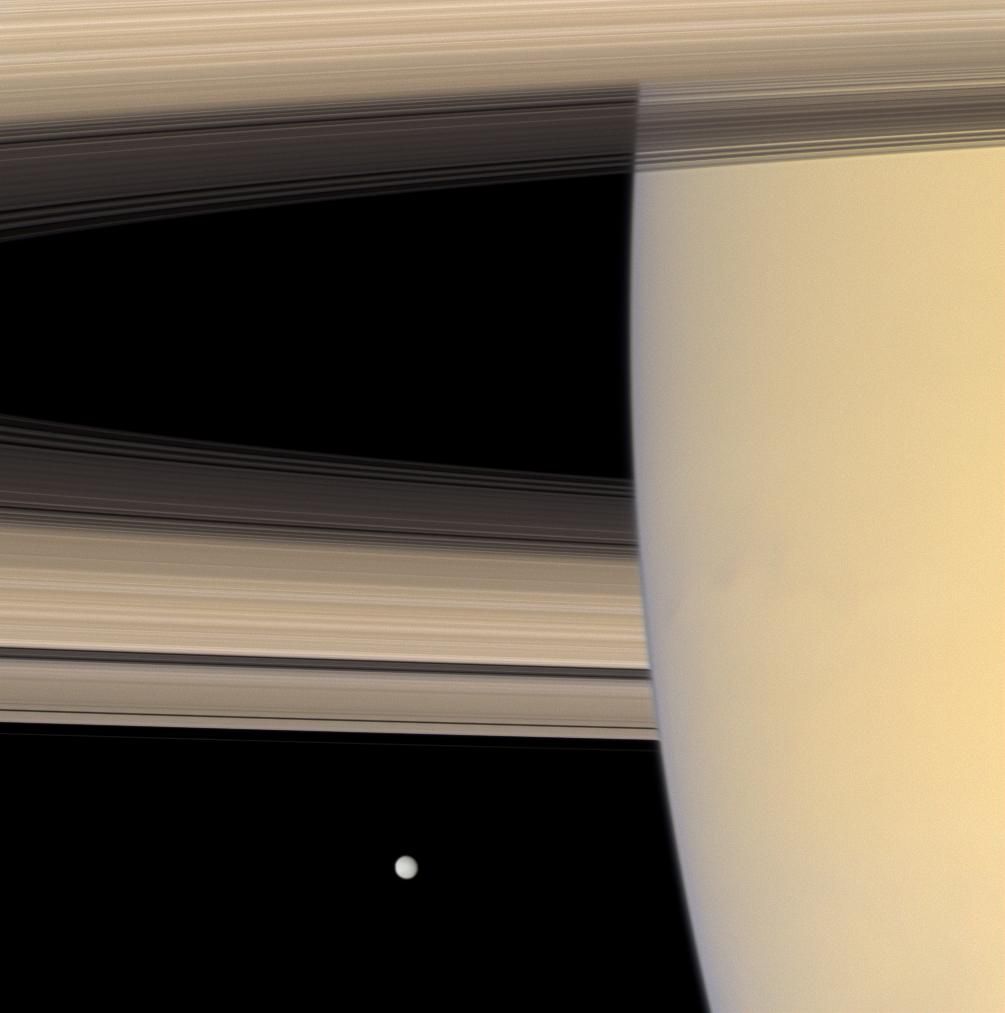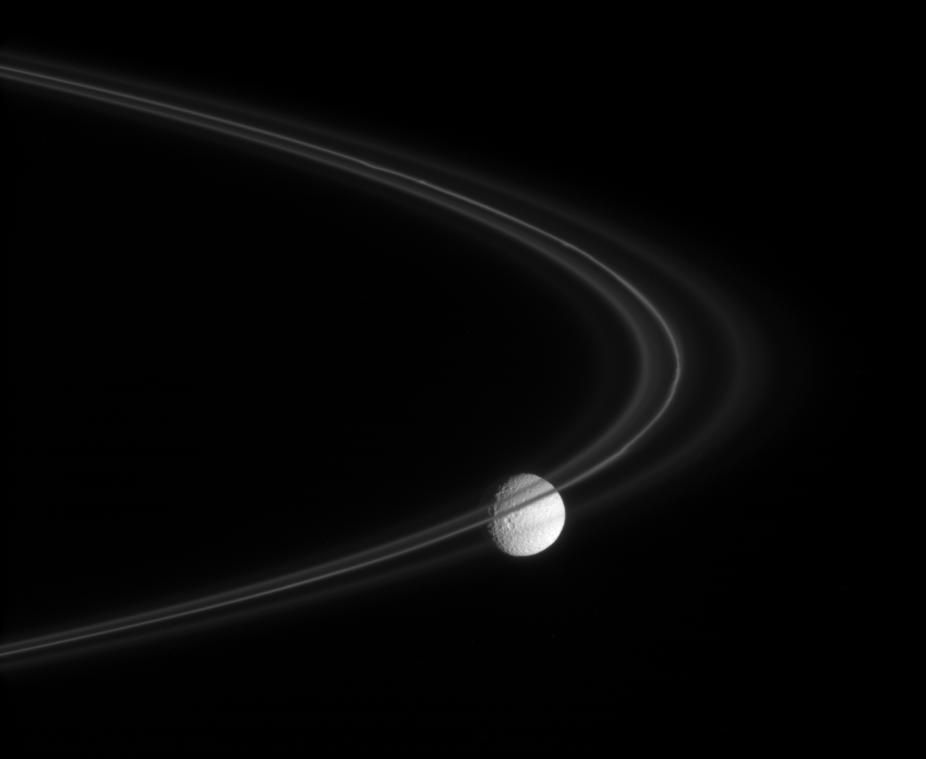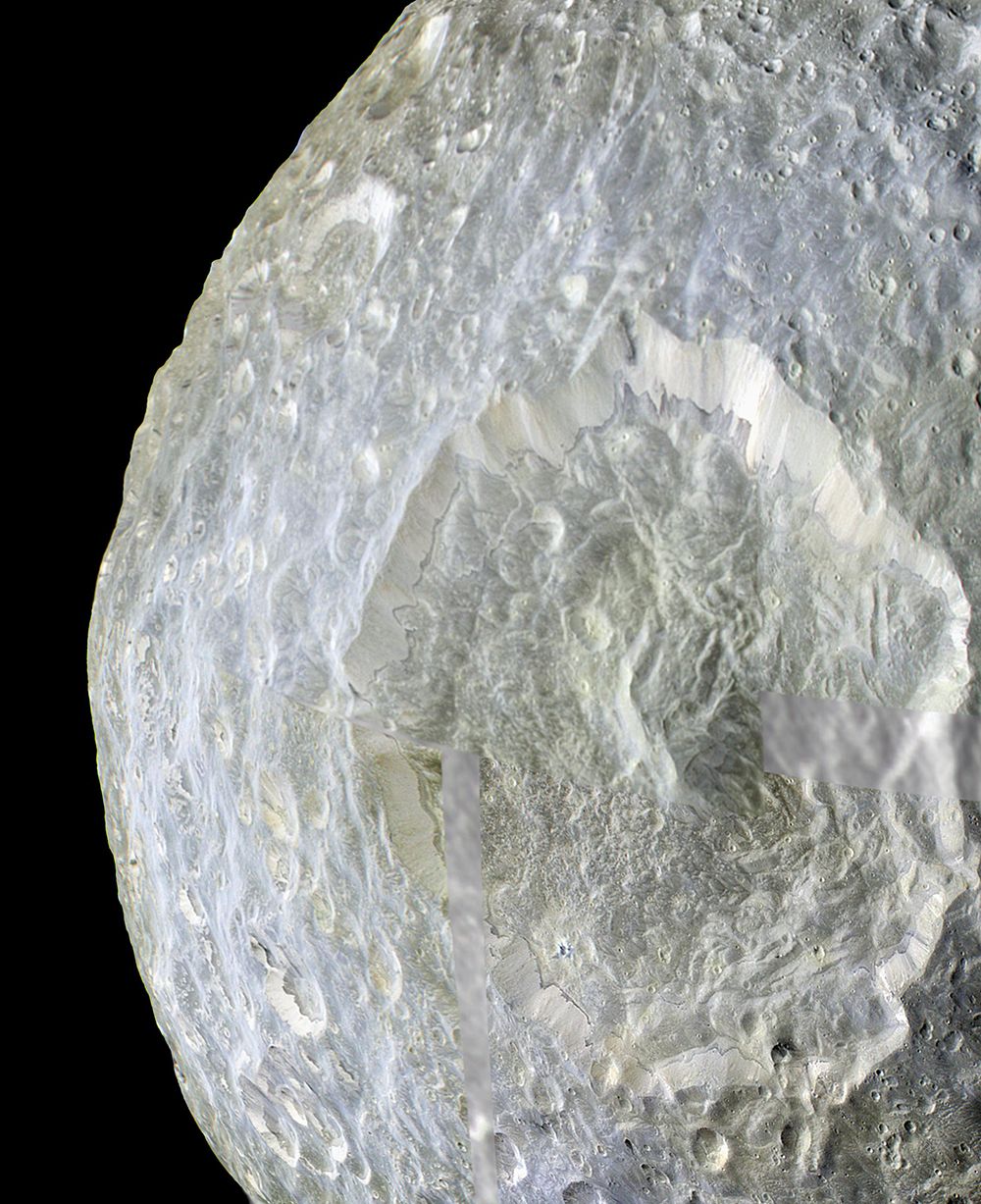A Mysterious Force is Acting on Saturn’s “Death Star” Moon
Tiny, cratered Mimas is wobbling way more than it should be, hinting that it might contain either an oddly shaped core or a subsurface ocean
/https://tf-cmsv2-smithsonianmag-media.s3.amazonaws.com/filer/bd/64/bd64d004-7d8f-4edd-87ef-2aa60710ea00/mimas.jpg)
Yes, that is a small moon, and it’s harboring a secret. NASA observations reveal that Saturn’s miniature moon Mimas—famed for the large crater that makes it look like a Star Wars prop—is wobblier than expected. The mysterious motion indicates that the heavily pockmarked satellite might contain either an oddly shaped core or a subsurface ocean.
“When Mimas was first seen by a spacecraft, it was classified as a boring satellite due to its heavily cratered and geologically inactive surface. Hence it was suggested that the moon is cold and has no heating in it,” says Radwan Tajeddine, a research associate at Cornell University. But in a paper appearing today in Science, Tajeddine and his colleagues suggest that Mimas might not be so dull after all.
The team used images taken by NASA’s Cassini spacecraft to analyze the rotation of Mimas as it spins on its axis, as well as the moon’s orbit around Saturn. The team expected to see some rocking motion, because Mimas’s rotational and orbital periods influence one another. “The wobbling happens because the orbit of the moon is elliptic,” says Tajeddine. “So the moon is faster when close to the planet and slower when far from it.”
However, Cassini’s pictures revealed that the moon’s wobble was double what was expected. Conventional models of the moon, such as one that assumed the moon’s mass is evenly distributed on the inside, couldn’t explain the strong wobbling. So the team started investigating more exotic scenarios.
In the end, only two possibilities seemed to fit the data. Mimas might have an elongated, rugby ball-shaped core, which would throw off its center of gravity as it orbits. Or a global ocean lurks deep beneath the moon’s crust, and its sloshing is creating the extra wobbliness. Further observations by Cassini could prove which scenario is correct. If there is a bizarrely shaped core, its weird gravitational pull will also affect the spacecraft’s trajectory, says Tajeddine. “But if no significant anomaly is detected, then the ocean is the correct hypothesis.”
Either way, the answer should be enlightening, he added. If it turns out Mimas has an oblong core, then it could provide clues about the moon’s origin. According to one theory, the moon might have been born within Saturn’s rings. Slow agglomeration of rocky chunks created an elongated object, which then became covered in ice. As the moon migrated out of the rings, the icy shell could have relaxed into a nearly spherical shape while the core retained its oblong shape.
Alternatively, if it turns out that a sea lurks beneath Mimas, that would suggest the moon is hiding a previously unsuspected heat source. “Mimas’s geologically inactive surface does not suggest any heating inside this moon, but the moon’s eccentricity could be the answer,” says Tajeddine.
Eccentricity refers to the fact that the moon’s orbit is elliptical. Because of that non-circular path, Mimas might be heated by the push and pull of mighty Saturn’s gravity as it moves closer and further from the planet. This so-called tidal heat is thought to be the same mechanism that allows Jupiter’s moon Europa to have a vast liquid ocean under its icy crust. “This phenomenon will create friction inside the moon, which will induce heating that will melt the ice and form an ocean,” Tajeddine speculates.


